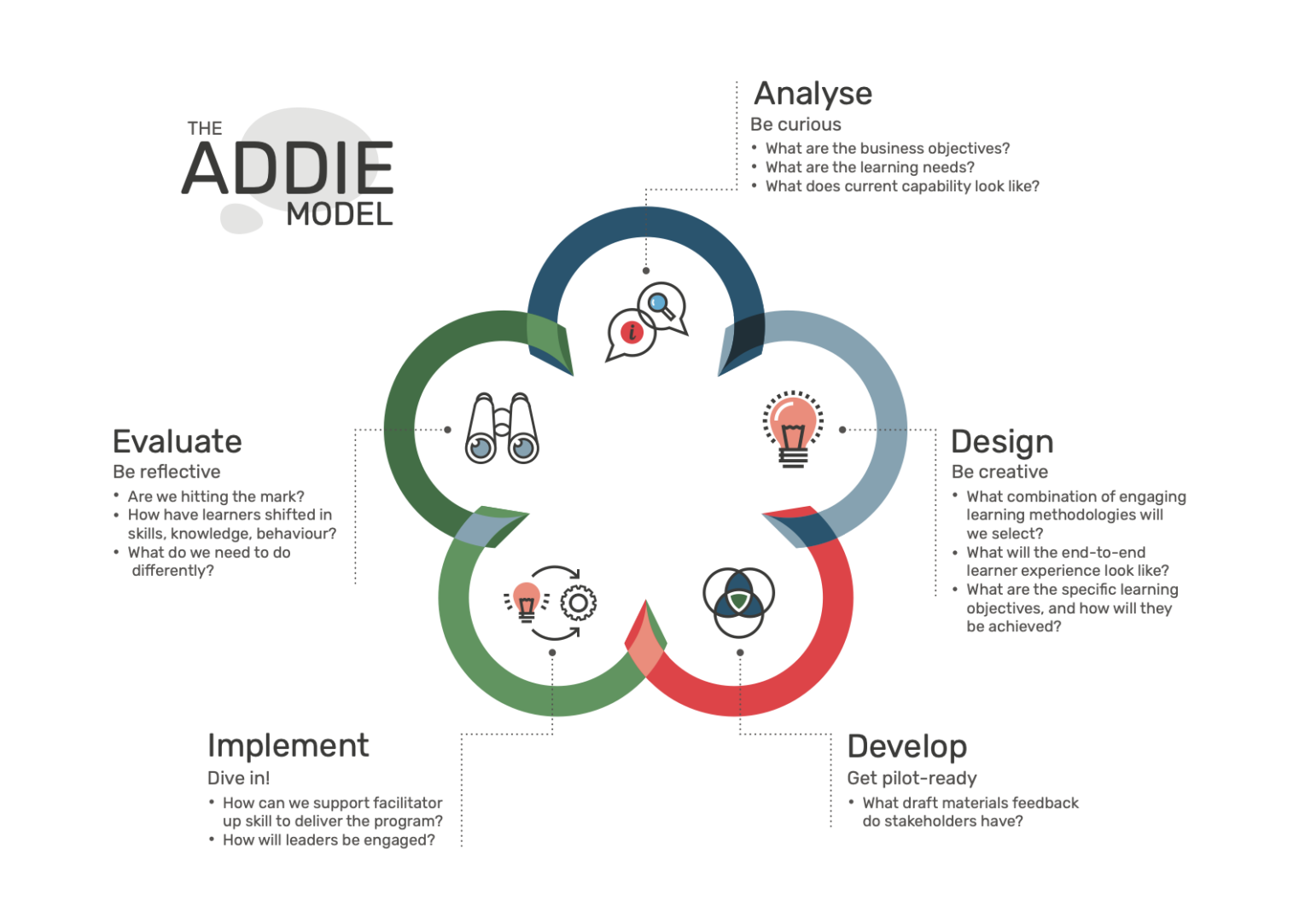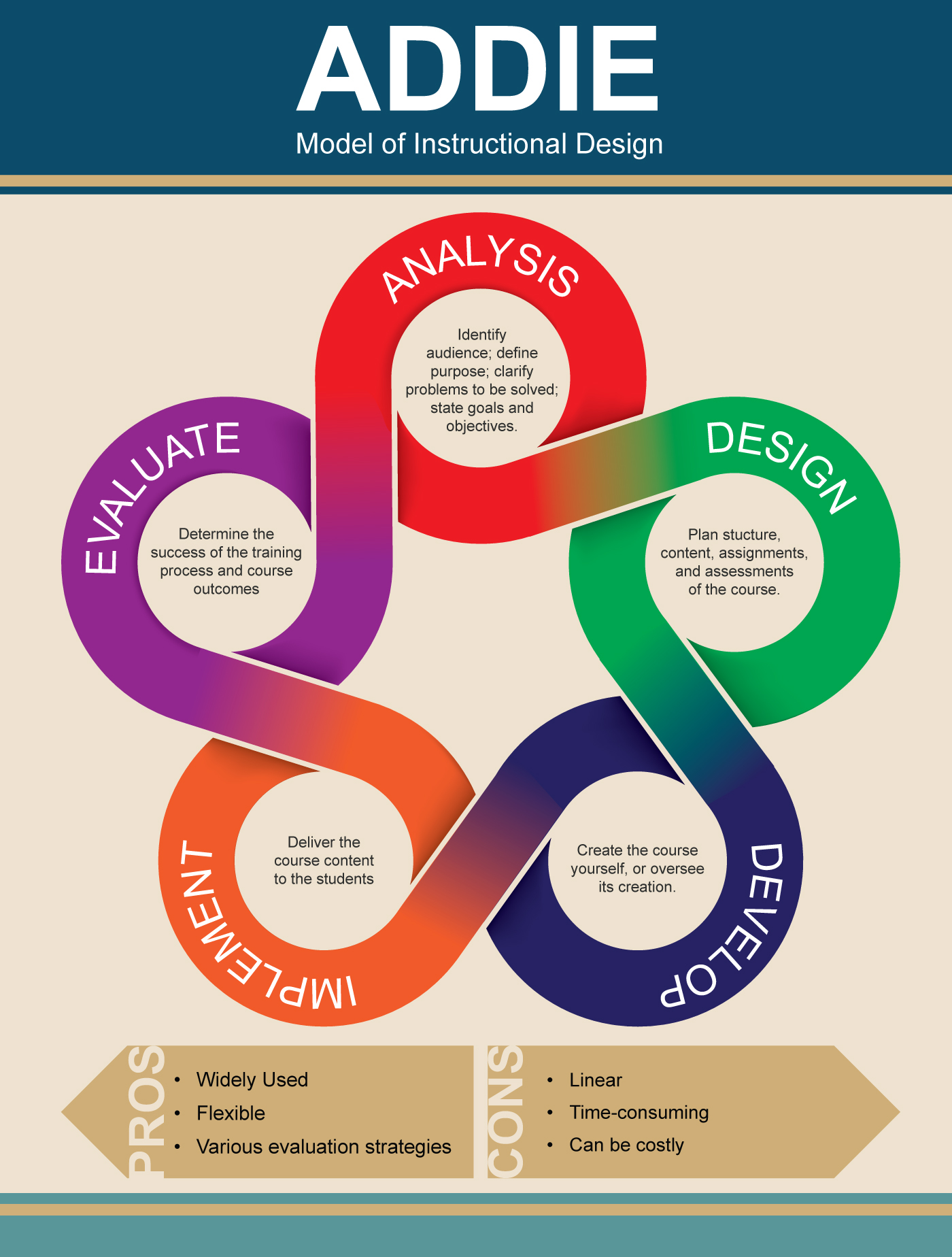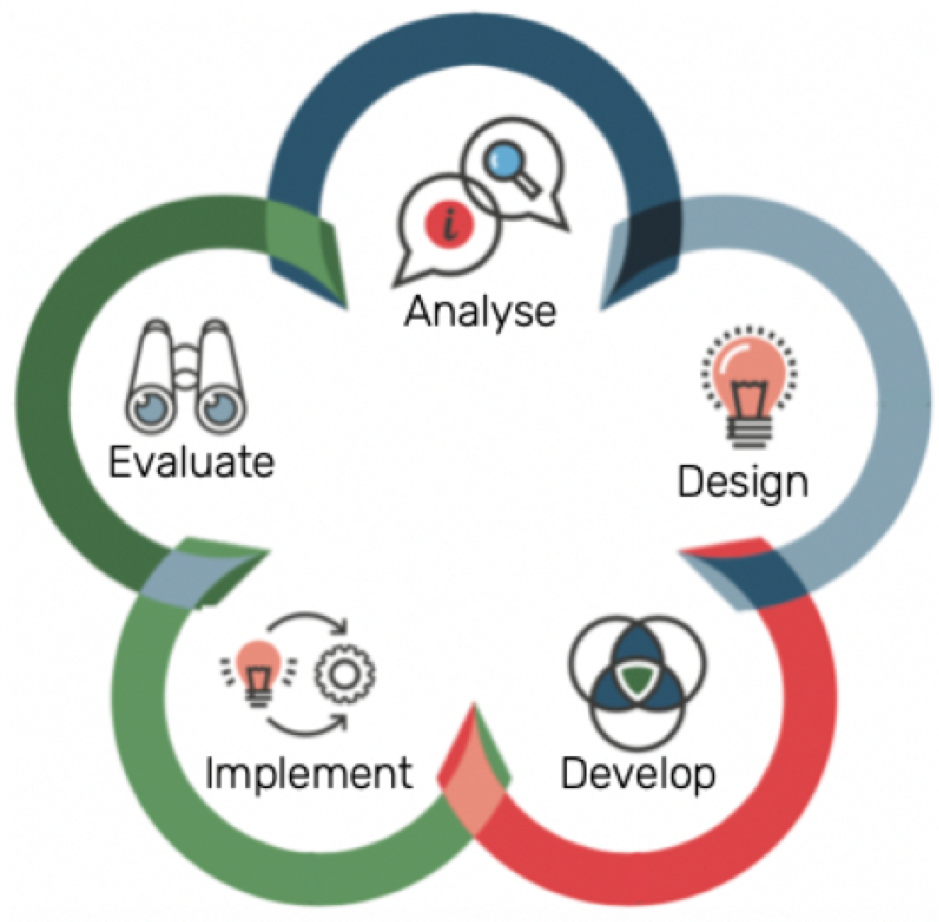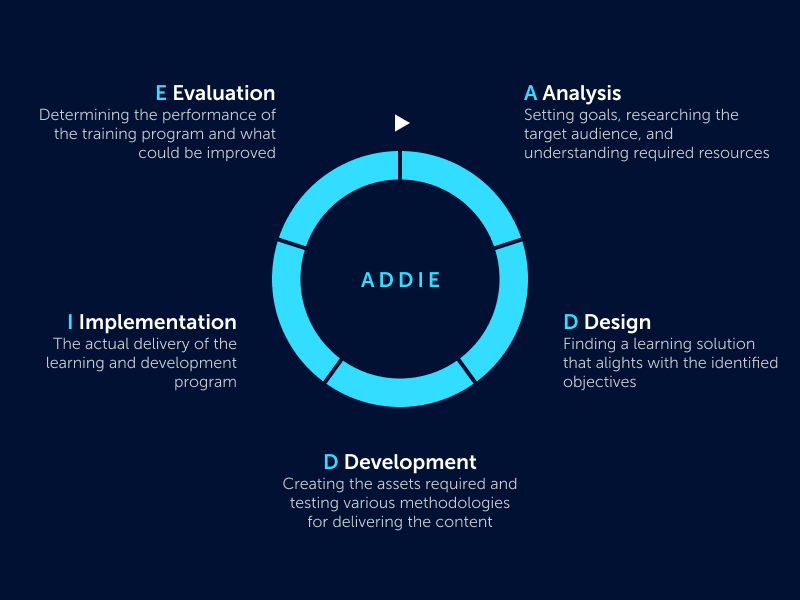
What is the ADDIE Model of Instructional Design Anyway
The ADDIE model is the generic process traditionally used by instructional designers and training developers. The five phases—Analysis, Design, Development, Implementation, and Evaluation—represent a dynamic, flexible guideline for building effective training and performance support tools.

What is the ADDIE Model of Instructional Design / Training? Pitch Labs
Design Development Implementation Summative Evaluation Formative Evaluation The ADDIE Model is an iterative instructional design process, where the results of the formative evaluation of each phase may lead the instructional designer back to any previous phase. The end product of one phase is the starting product of the next phase.

ADDIE Model of Instructional Design; created in Illustrator and
The ADDIE is a flexible, systematic process that training developers can use to develop training for adult learners.

Award winning product design Addi design studio
What is ADDIE? From Military System to Global Method ADDIE is an acronym, standing for analyze, design, develop, implement, and evaluate. Together, these 5 steps describe the process for creating an effective piece of instructional content.

Award winning product design Addi design studio
ADDIE stands for Analysis, Design, Development, Implementation, and Evaluation. This model provides a systematic and iterative approach to the design and development of learning experiences. The ADDIE model is a cyclical process, meaning that the steps are repeated until the desired learning outcomes are achieved.

Award winning product design Addi design studio
Design Development Implementation Evaluation The model is meant to be completed in sequential order, from Analysis to Evaluation. However, ADDIE is designed to be a flexible, continuous process of improvements and iterations. In the context of eLearning, let's take a closer look at each phase. 1. Analysis

EXHIBIT Addi design studio
Design Development Implementation Evaluation Most ID models are variations of the ADDIE model. The concept of Instructional Design can be traced back to as early as the 1950s. But it wasn't until 1975 that ADDIE was designed.

LINK Addi design studio
The ADDIE model or some derivative of it provides designers with the necessary structure for designing any curriculum, regardless of the instructional design methods employed. Anything from lecture to Web-based training starts from the same fundamentals—the ADDIE model, which was created by Florida State University for the military in the 1970s.. In the ADDIE model, the analysis phase is the.

BISTRO Addi design studio
The ADDIE model, developed by Florida State University in the 1970s, is the most well-known framework for designing instruction to improve human performance. ADDIE is an acronym representing the five key stages of the instructional design process. The ADDIE process consists of: Analysis Design Development Implementation Evaluation

What is the ADDIE Model of Instructional Design Anyway
The ADDIE model is the original instructional design framework upon which most current models are based. Analysis, design, development, implementation, and evaluation are important components of effective instructional design. In this course you will explore each of the five phases of the ADDIE model, how they interact to support an effective.

FRAME Addi design studio
ADDIE is a 5 step framework used in instructional design. Over the years, it has morphed from a linear approach to a more circular approach, as instructional designers have begun creating iterations of their courses. And it functions well whether your course is going to be offered online or in a physical classroom.

Using ADDIE Model of Instructional Design 5 Steps with Examples
A fundamental component of the Instructional design (ID) process is the utilization of design models. Models are essential for guiding the design, development, implementation, and evaluation of a training session or course. All instructional design models follow some variation of a three-step process:

UNDERSTAND SHELF Addi design studio
ADDIE is a leading learning development model used for instructional design, which is the complete process of designing, developing, and serving learning content. The model is often used to design training and learning & development programs in organizations. ADDIE stands for: A nalyze D esign D evelop I mplement E valuate

TELL Addi design studio
The ADDIE model instructional design has undergone a number of changes over the years. The following sections discuss these changes more specifically. Original ADDIE Model. The original ADDIE model encompasses a five-phase process that allowed for the analysis of instructional needs and the design, development, and implementation of.

100 made on the Addi machine, design by Fatimca Marrocco
What is the ADDIE Model? The ADDIE instructional design model is the standard process traditionally used by instructional designers to create learning content and experiences. The ADDIE model is at the very core of instructional design and is the basis of instructional systems design (ISD).

Hangout Addi design studio
The ADDIE model is a powerful framework for instructional design, guiding designers through the analysis, design, development, implementation, and evaluation phases. By following this systematic approach, instructional designers can create engaging and effective learning experiences that address learner needs and achieve desired outcomes.